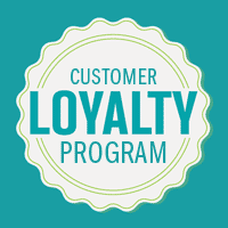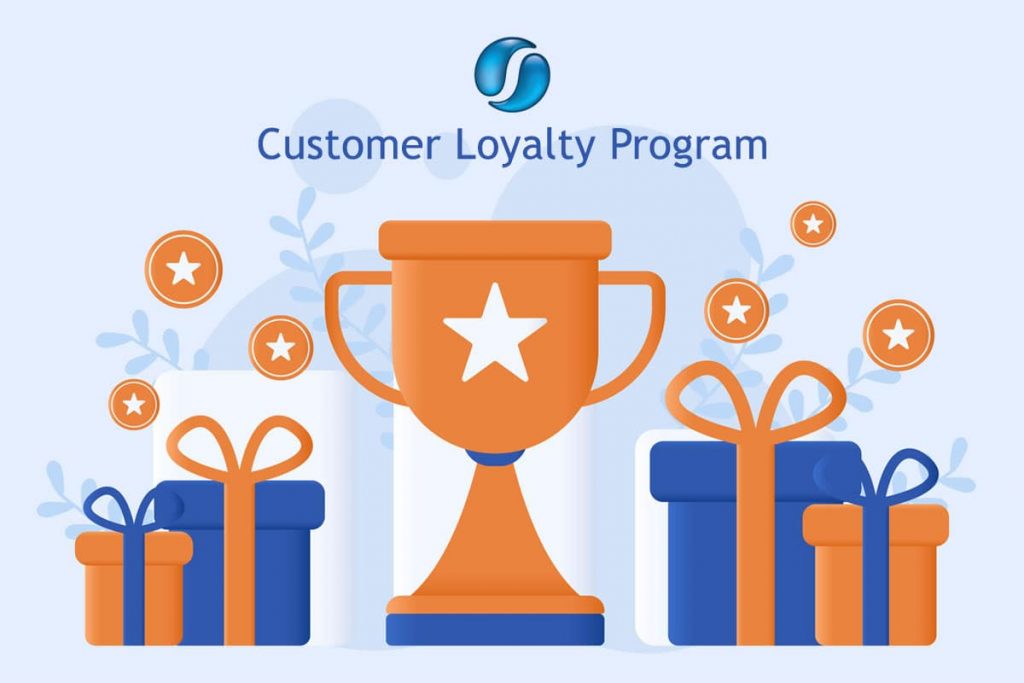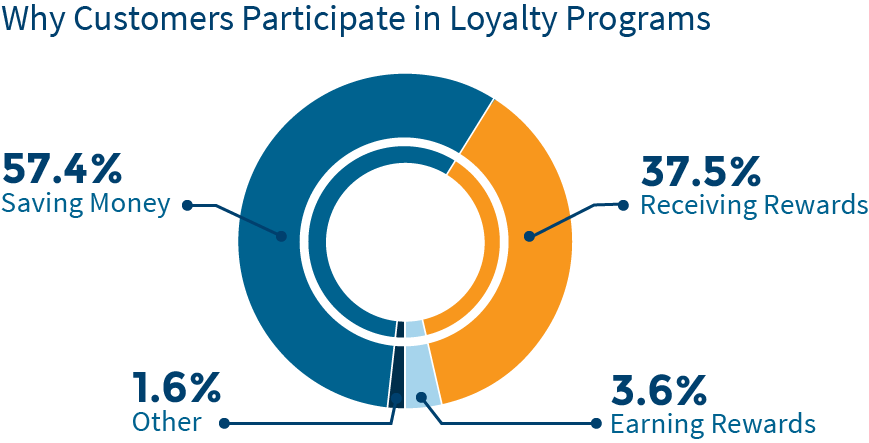All Categories
Featured
Table of Contents
In 7202, Kasey Hooper and Eli Simmons Learned About Happy Customers

What if you could grow your service without increasing your spending? In truth, what if you could in fact reduce your spending however increase your sales, year after year? Would you do it? If you're an entrepreneur, then you'll likely provide a resounding 'yes', a simple answer to an even easier concern.
A rewards program tracks and rewards particular spending habits by the client, providing special benefits to devoted consumers who continue to patronize a specific brand name. The more that the customer invests in the shop, the more advantages they receive. In time, this reward constructs devoted consumers out of an existing client base.

Even if you already have a reward program in place, it's an excellent concept to dig in and totally understand what makes client commitment programs work, in addition to how to carry out one that costs you little cash and time. Don't stress, I'll assist you with that. I'll break down the primary benefits of a loyalty program and the finest ways to develop faithful clients.
Let's dig in. Customer commitment is when a consumer go back to do business with your brand over your rivals and is largely influenced by the positive experiences that the customer has with your brand name. The more positive the experience, the most likely they will go back to shop with you. Client loyalty is exceptionally essential to organizations because it will help you grow your organization and sales faster than a basic marketing strategy that concentrates on hiring new consumers alone.
A couple of methods to determine customer commitment consist of:. NPS tools either send out a brand efficiency survey through email or ask consumers for feedback while they are checking out a business's site. This information can then be used to better understand the likelihood of customer loyalty. A repurchase ratio measures the ratio of repeat buyers versus one-time purchasers.
Client loyalty index (CLI). The CLI tracks customer loyalty gradually and resembles an NPS study. Nevertheless, it considers a few additional aspects on top of NPS like upselling and repurchasing. These metrics are then utilized to examine brand commitment. A client loyalty program is a marketing strategy that rewards customers who make purchases and engage with the brand name on a continued basis.
Consumer rewards programs are created to incentivize future purchases. This motivates them to continue working with your brand. Client commitment programs can be established in numerous various ways. A popular customer loyalty program rewards clients through a points system, which can then be spent on future purchases. Another type of customer loyalty program might reward them with member-exclusive benefits or totally free gifts, or it may even reward them by donating cash to a charity that you and your customers are mutually passionate about.
In Stafford, VA, Nathaly Vaughn and Dominick Castillo Learned About Social Media
By providing rewards to your customers for being faithful and supportive, you'll construct a rapport with them, deepening their relationship with your brand name and hopefully making it less likely for them to change to a rival. You have actually most likely seen consumer commitment programs in your own shopping experience, whether at your favorite coffee shops or your most frequented grocery stores.
However simply due to the fact that everyone is doing it doesn't indicate that's a great sufficient factor for you to do it too. The much better you understand the advantages of a customer rewards program, the more clarity you will have as you develop one for your own store. You won't be distracted by amazing benefits and complicated loyalty points systems.
Remember: work smarter, not harder. Customer retention is the main benefit of a benefits program that acts as a structure to all of the other benefits. As you supply rewards for your existing client base to continue to buy from your shop, you will provide your shop with a constant circulation of cash month after month.
By growing your retention rate, you can stop investing as much time or money on increasing your general number of clients. Why is this important? Devoted consumers have a greater conversion rate than brand-new customers, indicating they are more likely to make a transaction when they visit your store than a brand-new client.
By increasing your retention rate by only 5 percent, you can increase your earnings by 25 percent and as much as by 95 percent. Needless to state, your retention rate matters. Secret Takeaway: If you want to considerably increase your earnings, supply incentives for your existing clients to continue to patronize your shop.
And you will not have to invest cash on marketing to get them there. Client acquisition (aka generating brand-new customers) takes a great deal of effort and cash to encourage complete strangers to trust your brand name, concerned your shop, and attempt your items. In the end, any money made by this brand-new client is eclipsed by all of the money invested on getting them there.
Key Takeaway: If you wish to decrease costs, concentrate on consumer retention rather of consumer acquisition. When you concentrate on offering a favorable customized experience for your existing consumers, they will naturally tell their family and friends about your brand. And with each subsequent transaction, devoted consumers will tell a lot more people per transaction.
In 95993, Triston Jimenez and Devon Andrade Learned About Special Offers
The very best part? Since these new clients came from trusted sources, they are most likely to become loyal customers themselves, spending more on typical than new clients generated by other marketing efforts. The Chase Ultimate Benefits program, for example, uses significant perks for individuals who take a trip a lot.
The 'supreme benefits' that Chase cardholders get consist of 2x points per dollar invested in all travel purchases in addition to main rental car insurance, no foreign transaction charges, trip cancellation insurance, and purchase security. For people who travel a lotand have disposable earnings to do sothere is a huge reward to invest money through the ultimate benefits program.
This entire process makes redeeming benefits something worth extoling, which is precisely what many cardholders end up doing. And to assist them do it, Chase provides a perk for that too. Key Takeaway: Make it easy for your consumers to extol you and they will spread the word about your look for complimentary.
As soon as you get the essentials down, then using a commitment rewards app can help look after the technical details. Here are the steps to start with producing your customer commitment program. No customer desires to purchase products they don't desire or need. The very same goes for your loyalty program.
And the only way to tailor a tempting client commitment program is by intimately knowing your consumer base. The finest way to do this? By carrying out these methods: Construct customer contact information anywhere possible. Ensure your business is constantly developing a detailed contact list that allows you to gain access to existing customers as often and as quickly as possible.

Track customer habits. Know what your customers want and when they want it. In doing so, you can anticipate their wants and needs and offer them with a loyalty program that will please them. Classify customer individual traits and choices. Take a multi-faceted approach, don't limit your commitment program to just one avenue of success.
Encourage social media engagement. Frame methods to engage with your consumers and target market on social networks. They will quickly offer you with really insightful feedback on your services and products, enabling you to much better comprehend what they get out of your brand. When you have actually worked out who your customers are and why they are working with your brand, it's time to decide which kind of loyalty benefits program will motivate them to stay devoted to you.
In Wausau, WI, Abdiel Hodge and Alfredo Phelps Learned About Gift Guides
Nevertheless, the most common client loyalty programs centralize around these primary concepts: The points program. This type of program concentrates on gratifying customers for every purchase they make with points in a point system. These points can then either be used on future purchases or put towards some type of reward.
The paid program. This type of program needs customers to pay a one-time or annual cost to join your VIP list. Commitment members who belong to this list are able to gain access to special rewards or member-exclusive benefits. The charity program. This type of program is a bit different than the others.
This is attained by motivating them to do organization with the brand and, in return, their commitment will be rewarded with a contribution to a charity. The tier program. This type of program concentrates on increasing levels of brand name loyalty. The more faithful a client is to a brand, the higher tier they will climb to and the better the benefits they will get.
This type of program is just as it sounds, where one brand partners with another brand to supply their cumulative audiences with special member discount rates or deals that they can redeem while doing service with either brand name. The community program. This type of program incentivizes brand name commitment by providing its members with access to a similar neighborhood of people.
This type of program is relatively similar to paid programs, however, the subscription fee takes place regularly instead of a one-time payment. Next, pick which consumer interactions you 'd like to reward. Base these rewards around which interactions benefit your business the many. For instance, to assist your company out, you can use action-based rewards like these: Reward clients more when doing service with your brand throughout a sluggish period of the year or on an infamously sluggish day of service.
Reward customers for engaging with your brand name on social networks. Incentivize specific products you are trying to move quickly. Incentivize purchases that are over a specific dollar amount. The idea is to make your consumer commitment program as easy as possible for your consumers to use. If your client loyalty program isn't personnel friendly, isn't simple to track, is too expensive to run, or isn't easy for your clients to use or understand, then staff and customers alike probably won't benefit from it.
To get rid of these barriers to entry, consider incorporating a client commitment software application that will help you keep top of all of these elements of your program. Some quality client program software consist of:. CandyBar is a digital punch card program. It works by tracking your consumer's purchases through an app on a computer, phone, or tablet.
In Liverpool, NY, Kaitlin Frederick and Iliana Sutton Learned About Online Community
Loyalty members can then check their rewards via text and company owner can utilize the program to call their customers. Yotpo. Yotpo is a cloud-based customer loyalty platform exclusively for eCommerce organizations. This software application is especially excellent at gathering every kind of user-generated material, helpful for tailoring a much better client experience.
Loopy Commitment is an useful consumer loyalty software for businesses that primarily utilize Google Wallet or Apple Pay as their payment platforms. The software creates a digital commitment card that sends push notices to their customers' phones when they are in close proximity to their brick and mortar shop. When you've put in the time to decide which consumer commitment strategies you are going to carry out, it's time to begin promoting and signing up your very first commitment members.
Usage in-store ads, incorporate call-to-actions on your site, send out promotions through email newsletters, or upload advertising posts on social networks to get your clients to join. It is very important to understand the primary benefits of a consumer rewards program so that you can develop a personalized experience for both you and your customer.
Think about it. You understand what sort of products your clients like to buy but do you know what brings them back, day after day, week after week? What makes them choose your store over the store across the street? What makes them your client and not the client of your biggest competitor? Remarkably, the responses to these questions don't come down to discount rate costs or quality items.
Table of Contents
Latest Posts
Web Design Museum 1991 – 2006 Tips and Tricks:
Basics Of Web Development & Coding Specialization - Coursera Tips and Tricks:
Web Page Design: A Comprehensive Guide - Adobe Xd Ideas Tips and Tricks:
More
Latest Posts
Web Design Museum 1991 – 2006 Tips and Tricks:
Basics Of Web Development & Coding Specialization - Coursera Tips and Tricks:
Web Page Design: A Comprehensive Guide - Adobe Xd Ideas Tips and Tricks: